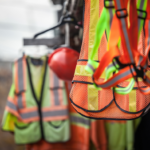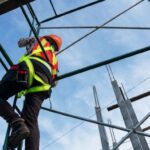Compact Safety: Navigating Confined Spaces
In various industrial settings, confined space work presents unique challenges that demand careful attention to detail and proactive risk management. Despite their restrictive nature, confined spaces are integral to many industrial processes, making them unavoidable in certain work environments. In this blog, we will dive into the key highlights of confined space safety and explore common hazards and regulatory requirements.
Identifying Hazards
The first step in ensuring confined space safety is to identify potential hazards. These hazards can vary widely but commonly include:
- Toxic or flammable atmospheric conditions
- Engulfment risks
- Physical hazards such as falls or entrapment
- Asphyxiation, often caused by oxygen deficiency or exposure to toxic gases, ranks among the leading causes of fatalities in confined space accidents, according to OSHA.
OSHA Regulations: Standard 1910.146
To address the risks associated with confined spaces, OSHA has established regulations outlined in standard 1910.146, which mandates that employers:
- Evaluate confined spaces for potential hazards
- Implement safety measures to control those hazards
- Provide comprehensive training to employees
- Establish a permit system for entry into confined spaces
Confined Space Safety Training
Comprehensive training is the key to confined space safety. Training should cover hazard recognition, proper entry and exit procedures, emergency response protocols, and the correct use of personal protective equipment (PPE). (You can check out our blog here to learn more about emerging PPE trends!) Additionally, employers must establish procedures for obtaining entry permits, which serve as written records of pre-entry evaluations and conditions inside confined spaces.
In conclusion, ensuring safety in confined spaces requires a multifaceted approach that encompasses hazard identification, regulatory compliance, comprehensive training, and ongoing vigilance. By prioritizing safety, employers can create work environments where employees feel protected and equipped to navigate the challenges of confined space work. Together, let’s commit to upholding the highest standards of safety in confined spaces and beyond!



